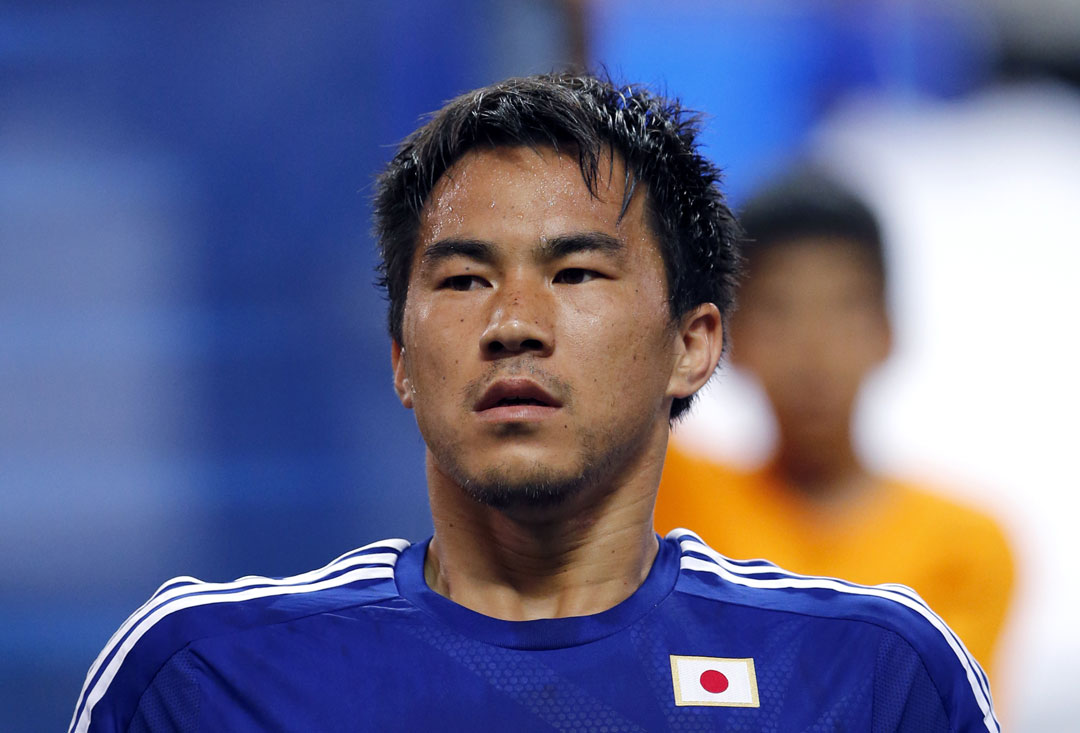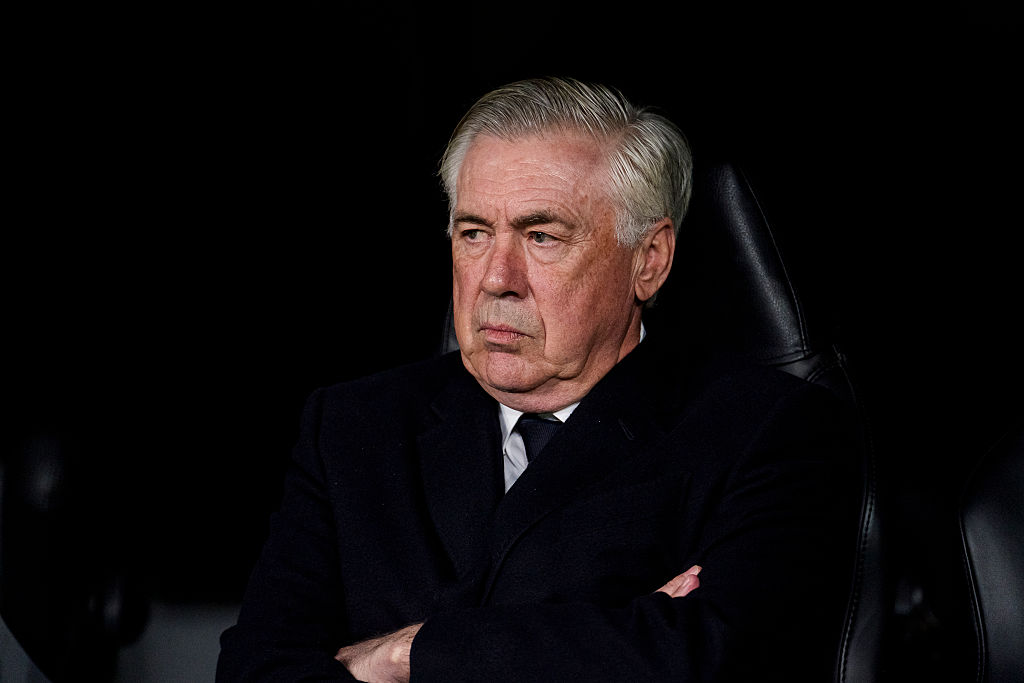Everything you need to know about... Shinji Okazaki
Ross Dunbar profiles Shinji Okazaki, the Japanese striker hoping to fire the Samarai Blues to glory...

The 60-second story
The local media need to fight through the hordes of press from Japan who always want a sound bite from him. German football’s welcomed a steady influx of Japanese footballers in the last few seasons – most notably the likes of Shinji Kagawa at Borussia Dortmund, who began a fruitful relationship between the two nations.
Date of Birth: 16/4/1986
Place of Birth: Hyogo, Japan
Position: Striker
Height: 5ft 9in
Former Clubs: Shimizu S-Pulse, VfB Stuttgart
Current Club: Mainz (35 appearances, 15 goals)
International record: Japan (74 appearances, 38 goals)
Shinji Okazaki, however, has gone one step further than the short-term explosion of quality from Kagawa; he’s now the leading Japanese scorer for a Bundesliga club in one season with 15 goals.
Idolised by his new supporters in Mainz, Okazaki is more than a traditional penalty-box striker. He was voted this season’s most improved player on the league’s official website. Small in stature, but with a fiery – and controlled – desire in attack, he’s relishing a return to his natural position after two years on the left wing at Stuttgart.
Why you need to know him
He’s the man solving Japan’s striker crisis. We all know about Keisuke Honda, Kagawa and other sterling attacking talents – but the main point of criticism from the Confederations Cup last summer was the lack of proficiency at the apex of their four-man attack. Now, Japan will boast two glowing centre-forwards in the Mainz ace, as well as 1860 Munich striker Yuya Osako.
The striker emerged as a late bloomer, but built up a fine reputation as one of the J-League’s best marksmen. At an early age, he had the sporting genes of his mother who was a former tennis player. Like most young players in Japan, Okazaki found his way in football at university, helping his team to a number of honours that attracted attention of Shimizu S-Pulse.
Get FourFourTwo Newsletter
The best features, fun and footballing quizzes, straight to your inbox every week.
After his league debut, he soon held down the centre-forward spot. It was then he caught the eye of the national team youth setup, representing his country at the Olympic Games and going on to become an established full international.
He settled in at VfB Stuttgart in 2011, but found himself in an unfamiliar left-sided berth for most of his spell there. “It was a challenge,” he admitted. Yet Mainz’s management had seen enough of his striking prowess in the J-League, with the Japanese national team and, sporadically, at Stuttgart – as his outstanding bicycle kick against Hannover in 2012 showed.
Having moved at the age of 25, two seasons in Stuttgart was perfect. While it was frustrating, sometimes tough, for Okazaki to assert his qualities on the team, he made a quick transition to settle into German culture. One factor was the man-management of Bruno Labaddia, whom Okazaki owed a lot to in his early days at Stuttgart.
It was clear, though, that something had to give. Okazaki’s new-found position was restrictive in what the Japan international could offer to the team. And so he penned a three-year-deal with Mainz at the beginning of this season – and he’s been one of the signings of the campaign.
“I have gained a lot of self-confidence this year,” he said in an interview. “The move to Mainz was a godsend for me.”
This self-confidence is clear to see on the pitch. When the teams are announced at the Coface Arena, Okazaki’s surname is regularly met with the most vociferous response. He’s an idol – he embodies the work-ethic of the club who have performed remarkably in the top flight over the last 10 years.
Now he wants to take this into the national team under Alberto Zaccheroni. He’s racked up an impressive 74 caps, scoring 38 goals in the process. But now, more than ever, Okazaki’s presence will be immensely appreciated in the team, as he fills the problematic hole at centre-forward and attempts to prove himself a crucial component in allowing the likes of Honda and Kagawa to thrive.
Strengths
His scoring record in the Bundesliga this season is special to say the least. But that isn’t his most endearing quality – frankly, Okazaki will run himself into the ground. He’s a work-horse, shuttling across the pitch to press opposition defences, while willingly chasing after many lost causes as Mainz look to change from defence to attack in an instant.
Even in the air, Okazaki is a threat. He’s less than 1.75m, but he’ll win his fair share of headers due to the spring he possesses from a standing position. For hours on end after school, he’d spend time with his sports coach, working for hours that’s evidently paid off – precision, dominance and with a sprightly spring in his step.
It’s no wonder Mainz are happy to give him the ball from any distance when he’s leading the line with his back to goal.
Weaknesses
Okazaki’s first touch can let him down at times. He’ll make up for that by probably securing possession at the second or third attempt, purely down to his incredible work-rate and tenacity to win the ball back. He would, perhaps, be the perfect centre-forward if his first touch was a little more secured rather than following his own style.
They said….
“He is always dangerous and can make the difference on the pitch," said former coach Thomas Tuchel. “We'd always take a close look at him when we played Stuttgart and we liked his good movement and work-rate.”
Did you know
Okazaki has even released a book in Japan about his rise to Bundesliga status. Maybe, he’s a bit harsh on himself – “no talent or technique… feet simply too slow… not very good at headers either” – but it provides an inspirational tale of how you can work hard to achieve goals and rub the words of a former school teacher right in his face. It’s got some good reviews, too.
In 2007, Okazaki seeked out expert advice on how to improve his running and co-ordination with the ball. Tatsuo Sugimoto, the former Japan 100m sprint champion who competed at Barcelona 1992, became his personal trainer and sought to improve his running style. Sugimoto had studied in Germany and came up with ground-breaking methods on back posture, the importance of the spine and co-ordination with the ball and without.
What happens next?
Okazaki really can become a difference-maker to the Samurai Blues at the World Cup. The team was performing in fine harmony at the Confederations Cup, combining a dazzling attacking synergy with some intense pressing in the final third. But goals were hard to come by, and so Okazaki has a pivotal role to play. Whether that leads to a bigger move remains to be seen. At 28, the striker seems settled at Mainz and will have the prospect of European football and a new coach to look forward to next season.
Talentspotter ratings
Shooting 7 • Heading 7 • Passing 5 • Tackling 6 • Pace 8 • Dribbling 5 • Creativity 5 • Work-rate 10
